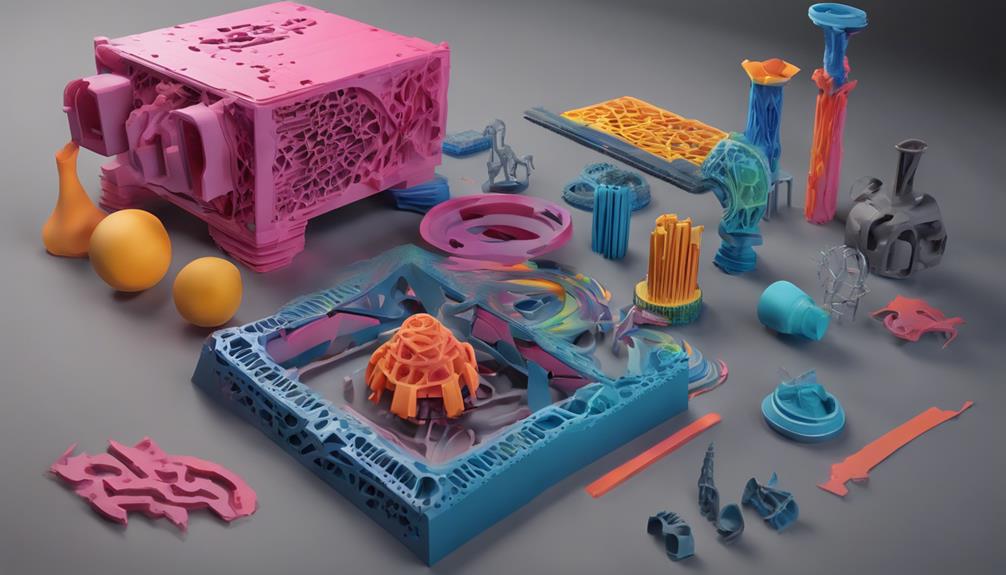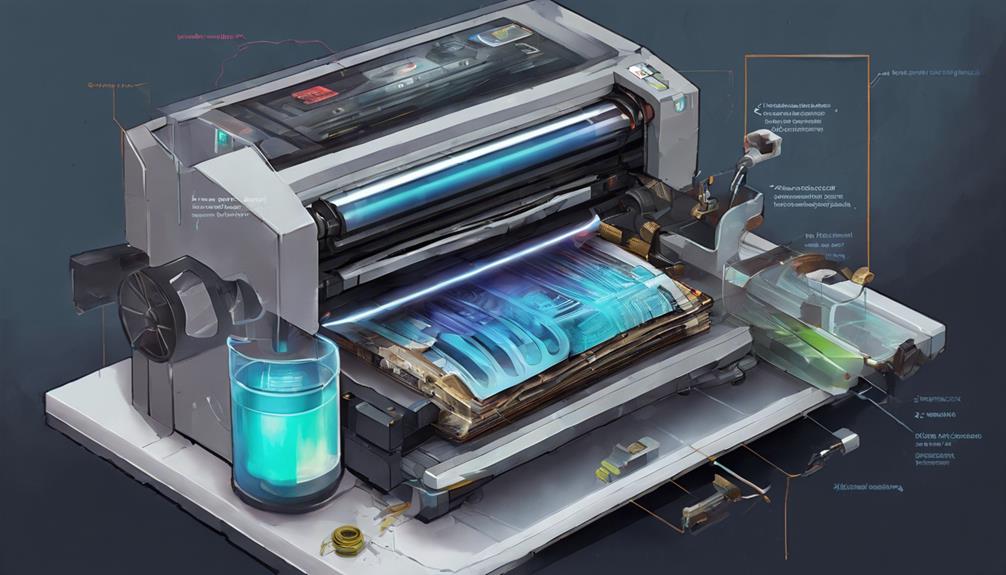PolyJet printers have emerged as a leading technology in the world of 3D printing, offering a unique approach to creating intricate and multi-material models. The precision and versatility of PolyJet technology have revolutionized the way designers and engineers approach prototyping and manufacturing. As we explore the intricacies of this sophisticated printing method, we will uncover the distinct advantages it holds over traditional techniques and explore the innovative possibilities it presents for various industries.
Advantages of PolyJet Technology

PolyJet technology offers unparalleled advantages in the field of 3D printing due to its utilization of Material Jetting (MJ) technology and photopolymers as the primary building material, setting it apart as a leader in the industry. This technology allows for high precision and accuracy in the creation of 3D models, making it ideal for applications where intricate details and smooth surfaces are essential.
Additionally, PolyJet printers excel in producing multi-material and multi-color prints, enabling the fabrication of complex designs with varying material properties in a single print job. The ability to use a wide range of materials, including bio-resins, further enhances the versatility of PolyJet printers, making them a preferred choice for industries requiring advanced prototyping and manufacturing capabilities.
Comparison With FDM Printing
When contrasting PolyJet technology with FDM printing, the utilization of distinct materials and printing processes becomes evident. PolyJet printers use liquid photopolymers that are jetted onto the build platform and cured by UV light, allowing for high precision and multi-material printing.
In contrast, FDM printers employ thermoplastics that are melted and extruded through a nozzle to build layers. While both technologies construct objects layer by layer, PolyJet offers superior precision and the ability to work with multiple materials simultaneously.
FDM, on the other hand, is more commonly used in home and hobbyist settings due to its affordability. The choice between the two technologies depends on factors such as material requirements, precision, and budget constraints.
Working Mechanism of PolyJet Printers

Utilizing advanced Material Jetting (MJ) technology, PolyJet printers operate by precisely jetting liquid photopolymers onto the build platform and curing each layer under UV light. This process allows for the creation of detailed and complex 3D models with high precision.
PolyJet printers work by jetting thin layers of photopolymer onto the build platform, which are then cured instantly using UV light. The layer-by-layer approach enables the printing of intricate designs and structures. Additionally, PolyJet printers can also use support materials to create overhangs and complex geometries.
Once the printing is complete, the finished models undergo a washing and post-processing stage to remove any support materials, resulting in a smooth and refined final product.
Materials Used in PolyJet Printing
What types of photopolymers are commonly utilized as building materials in PolyJet printing?
- Standard Photopolymers: These are general-purpose resins used for creating high-resolution models with smooth surfaces.
- Flexible Photopolymers: These materials are employed for producing parts that require elasticity or rubber-like properties.
- Transparent Photopolymers: Ideal for applications where see-through or translucent components are needed, such as lenses or clear prototypes.
These photopolymers are jetted onto the build platform in liquid form and then solidified layer by layer using UV light.
Additionally, support materials are utilized to create complex geometries, enabling the production of intricate and multi-material designs with diverse technical specifications.
Contrasting PolyJet and SLA Technologies

PolyJet and SLA technologies, although both utilizing liquid resin cured by UV light, exhibit distinct operational processes and features that set them apart in the domain of additive manufacturing.
SLA, or Stereolithography, prints upside down from a resin vat, while PolyJet builds on a plate. PolyJet allows for multi-material usage and altering the final product structure, offering higher print volumes and faster production times compared to SLA.
On the other hand, SLA requires post-production processes for support removal. While both technologies rely on UV light for curing liquid resin, the differences in their printing methods and capabilities make each technology unique in its application within the additive manufacturing industry.
Frequently Asked Questions
Can Polyjet Printers Produce Flexible and Rubber-Like Parts?
PolyJet printers can produce flexible and rubber-like parts by utilizing specific materials known as elastomers. These materials offer characteristics akin to rubber, providing flexibility and durability to printed parts, expanding the printer's capabilities for versatile applications.
Are There Limitations on the Size of Objects That Polyjet Printers Can Create?
PolyJet printers have limitations on the size of objects they can create due to the build volume of the printer. Larger objects may need to be sliced into smaller parts for printing and assembled post-production.
Do Polyjet Printers Require Specialized Ventilation Due to Resin Usage?
PolyJet printers do require specialized ventilation due to resin usage. Proper ventilation helps to mitigate fumes emitted during the printing process, ensuring a safe working environment. Adequate ventilation systems should be in place to address this need effectively.
Can Polyjet Printers Print Transparent or Translucent Objects Effectively?
PolyJet printers excel at producing transparent and translucent objects with remarkable clarity. Leveraging photopolymers and precise layer-by-layer curing under UV light, PolyJet technology guarantees effective creation of see-through parts, ideal for various applications necessitating such characteristics.
Are There Specific Post-Processing Steps Required for Polyjet-Printed Models?
Specific post-processing steps are necessary for PolyJet-printed models. These include support removal, washing to clean residual materials, and potentially curing the final prints further. These steps guarantee the model's accuracy, surface finish, and structural integrity.
Conclusion
To sum up, PolyJet printers offer unparalleled precision and versatility in 3D printing, making them an ideal choice for creating intricate and multi-material models. The technology's ability to jet liquid photopolymers and cure them with UV light results in high-quality, detailed prints.
When compared to other printing methods like FDM, PolyJet stands out for its superior accuracy and ability to produce complex designs with varying material properties. This makes PolyJet printers a top choice for industries requiring high precision and quality in their 3D models.